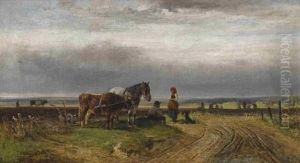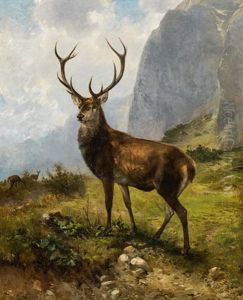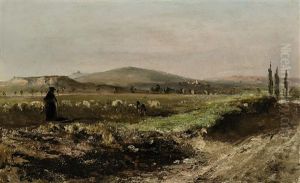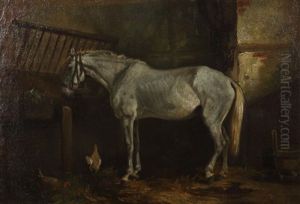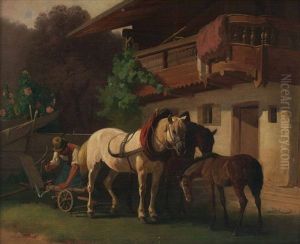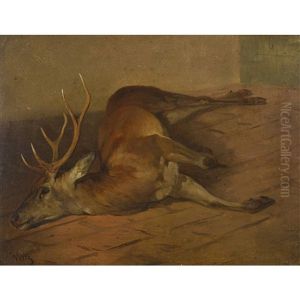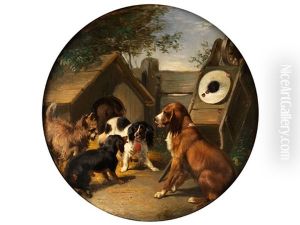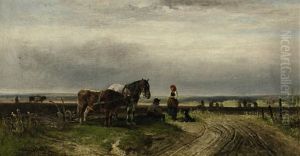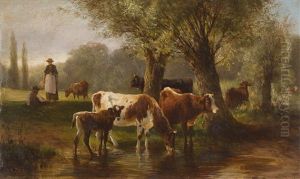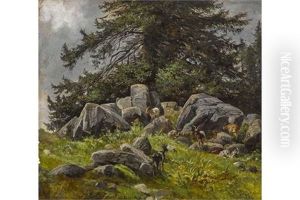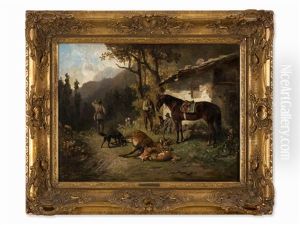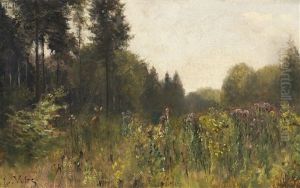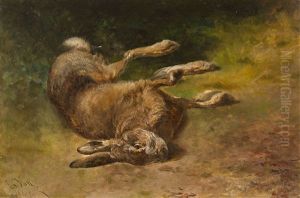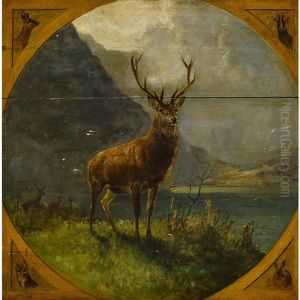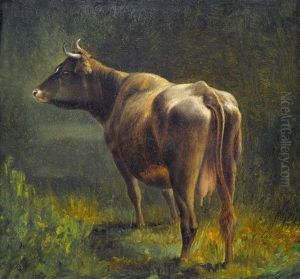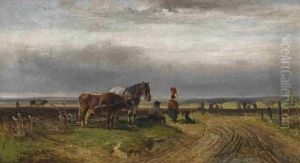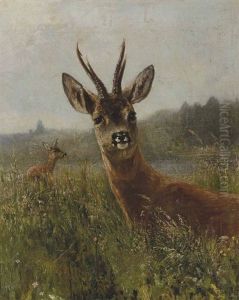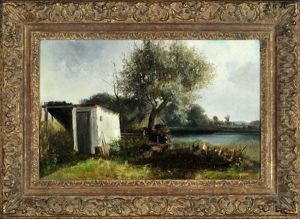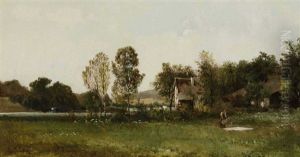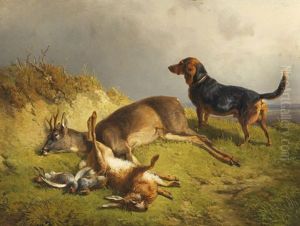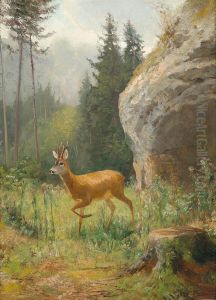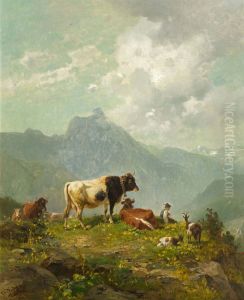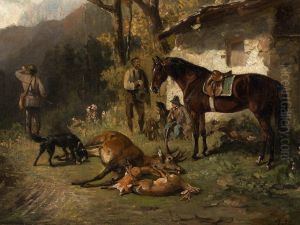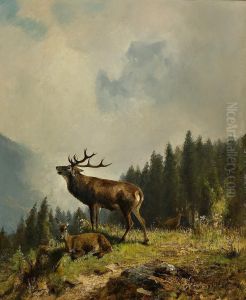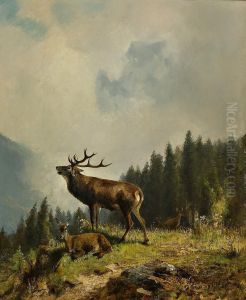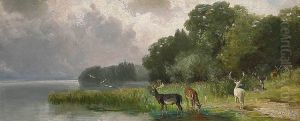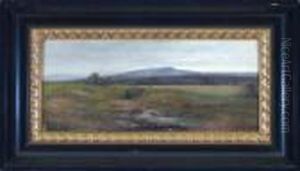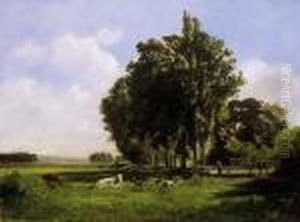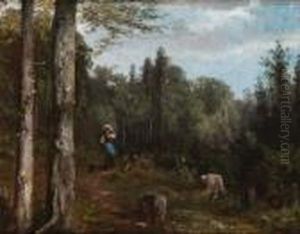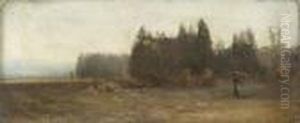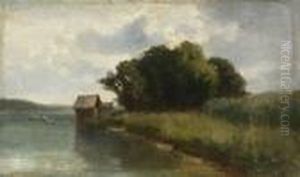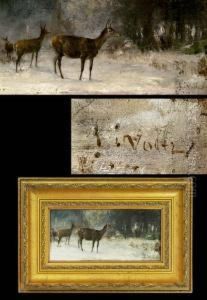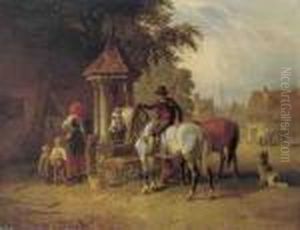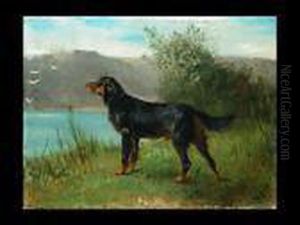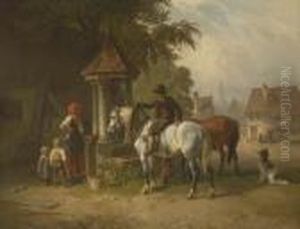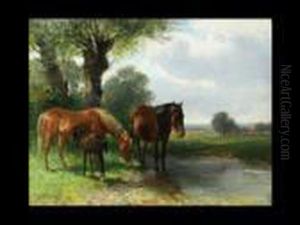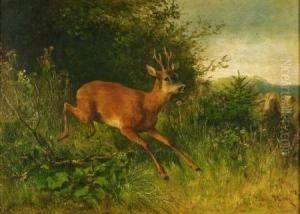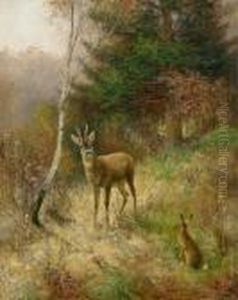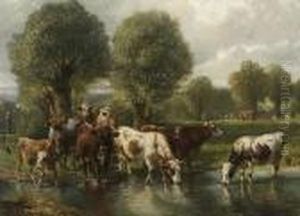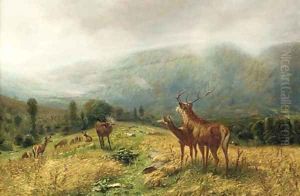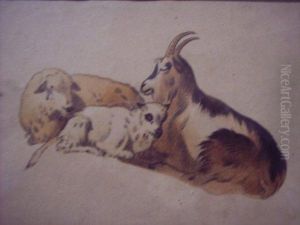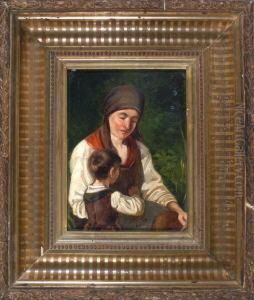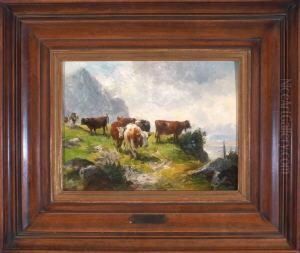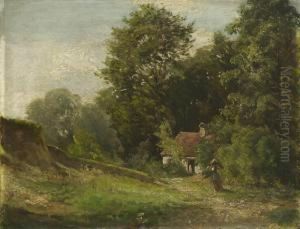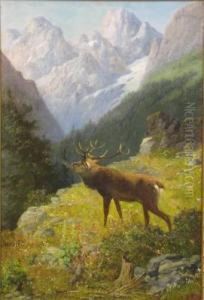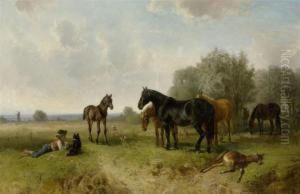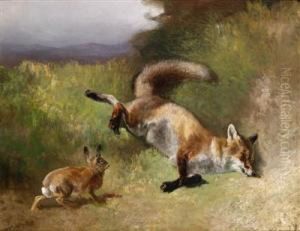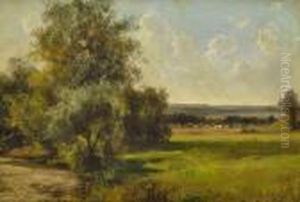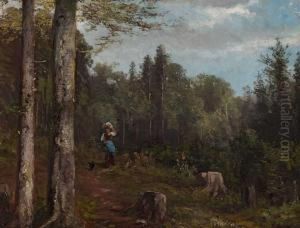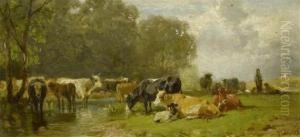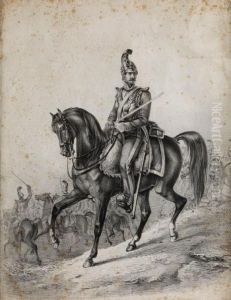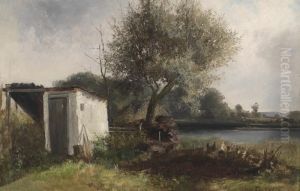Ludwig Gustav Voltz Paintings
Ludwig Gustav Voltz was a 19th-century German painter, known for his rural and animal scenes. Born on August 28, 1825, in Nuremberg, Bavaria, he was the son of the painter Johann Michael Voltz. Ludwig showed an early interest in art, following in the footsteps of his father. He received his initial training from his father and later attended the Nuremberg School of Art, where he further developed his artistic skills.
Voltz specialized in pastoral scenes that often featured livestock, especially horses and cattle. His work reflects a Romantic sensibility, with an emphasis on the beauty and harmony of rural life. He was particularly adept at capturing the naturalistic details of animals, which made his work popular with the agricultural and rural elite of the time.
Throughout his career, Ludwig Gustav Voltz exhibited his work in various German cities, gaining recognition and accolades for his contributions to the genre of animal painting. He was also an illustrator, providing illustrations for various publications, including agricultural journals and books, thereby reaching a wider audience.
Voltz's artwork was characterized by its fine detail, realistic representation, and the use of light to convey mood and atmosphere. He was considered one of the leading animal painters in Germany during his time and influenced a number of other artists in the genre.
He continued to paint and exhibit his work well into his later years, maintaining a prolific output. Ludwig Gustav Voltz passed away on June 25, 1911, in Munich, Germany. Today, his works are held in various collections and museums, and he is remembered as a significant figure in 19th-century German art, particularly in the area of animal painting.
